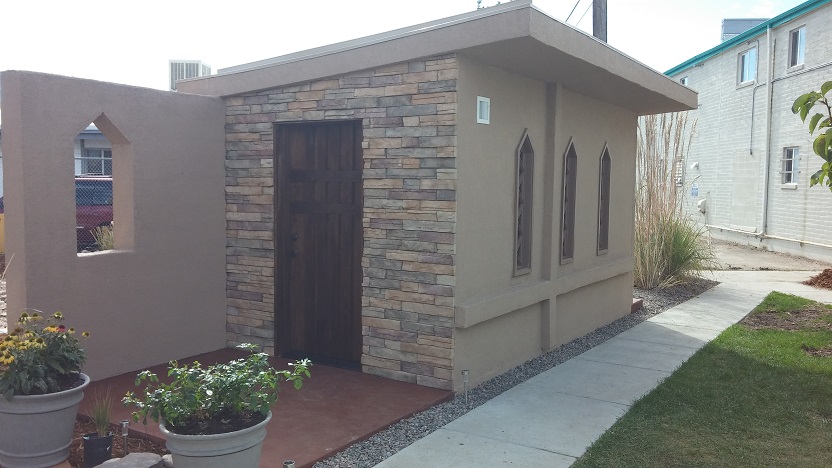
- Legacy Block is the ideal wall solution. Any common interior or exterior finish can be applied to Legacy Blocks directly, regardless of architecture style.
- Interior – You can directly apply drywall, plaster, stucco, tile, stone, and paneling to Legacy Blocks.
- Exterior – You can easily and effectively finish with any type of siding, stone, brick, or stucco without preparation or wire mesh.
INTERIOR AND EXTERIOR FINISHES
Finishes and Wall Preparation
Once the grout is firmly in place, you can remove any needed braces. Rasping – or a very thin layer of plaster – may be required if any panels became offset during installations. The amount of rasping required is dependent on personal preference and what final finish is desired.
Interior Finishes
Legacy Blocks can be finished with many different types of materials including drywall, tile, paneling, or plaster. Additionally, gypsum plaster, tile, or stone do not require lath, fiber mesh or backerboard. They can be applied directly.
Drywall
You can apply drywall directly to the wall without furring strips. Use patches of gypsum adhesive to attach sheet rock. Alternatively, there are unique screws available for the same result. For painting Legacy Blocks, use an acrylic or similar paint in less finished (basement) applications to control dust. We recommend Legacy Plaster, with the color of your choice already embedded.
To attach drywall to Legacy Blocks panels, complete the following:
- Disperse drywall mud or ICF foam on the back side of the drywall sheet.
- Press the drywall firmly onto the Legacy Blocks wall.
- Gently use a rubber mallet to hit the drywall to further spread the mud.
- Once all drywall sheets are in place, apply finish.
Plaster
You can apply plaster directly to Legacy Blocks panels. The only preparation is to rasp any problem areas and blow off loose pieces of Legacy Blocks material.
Brick or Stone Veneer
With Legacy Blocks, you can directly attach brick, stone or veneer to the panels. You can do this in several ways. Attach the tile stones with mortar or other tile adhesive or create a brick ledger and place the veneer on it. To make the stones secure, use ties just as you would if you were hanging duct work. Either nail these ties to the concrete or grout them into place. Make sure water cannot enter from the top of the wall or be trapped behind these surfaces. If a gap of air is occurs between the veneer and Legacy Blocks wall, waterproofing or weep holes may be required.
For tiles, complete these steps:
- Apply a scratch coat of mortar between ¼ inch to ½ inch thick.
- Lightly rake horizontal grooves into the scratch coat using a small piece of lath.
- Cure the coat for at least 24 hours.
- Continue applying mortar and attaching tiles as necessary using normal methods.
Stucco Exterior
Stucco is too often associated with cracking caused by changes and movements within the foundation. Legacy Blocks’s slightly flexible nature makes this a thing of the past.
Only rasping (if necessary) and blowing off of dust is needed to prepare the Legacy Block walls for the finish coat. You can apply stucco directly to Legacy Blocks. (We recommend Legacy Alternative Stucco)
Above Grade
Legacy Blocks drain water and can be left unfinished for long periods of time. However, it does not wick water and is not water tight.
Once the stucco is applied, make sure water does not seep into the wall. Stucco systems must follow code and be applied as the manufacturer specifies. Portland cement stucco systems are recommended with content of fibrous material such as Ultrakote Products, Kwik Kote Corp., Sacramento Stucco Western 1- Kote, or similar. We suggest using PU or acrylic based elastomeric products be if a top coat is being applied.
To start the process, remove any and all debris, dust, and protruding defects from the surface of the wall. To avoid cracking and loss of bond, before you apply the mortar, make sure to dampen the wall surface to keep the wall from pulling moisture out of the stucco too quickly. You can apply the coats in 1-3 layers.
If two coats are necessary, use the base coat (¼ inch or more) to level and the secondary coat (⅛ inch or more) to create a uniform finish.
For a three coat system, the first layer, or “scratch” layer, is used to ensure strong adhesion to the second layer. This layer is usually between ⅛ inch and ⅜ inch. The second layer, known as the “floating” or “brown” layer, is also between ⅛ inch and ⅜ inch. Add color or texture for the third layer. It only needs to be ⅛ inch or less.
Once the application of stucco layers have been completed, it is important to keep it damp for several days. Mist the surface with water occasionally. If adding cement paint or color wash, wait at least 6 weeks for the mortar to dry.
To complete your project, it is vital that doors and windows be sealed effectively to ensure no water seepage. Water infiltration into the Legacy Blocks must be avoided. Check all horizontal areas, including window sills and parapets, and when necessary, seal these areas with masonry sealer (Loxon primer by Sherwin Williams, or Seal Krete sealer). Be careful to follow all product instructions for any sealant you choose. When caulking gaps around doors, headers, windows, etc., make sure to use cover adequately so there is enough substance present to withstand potential expansion of stucco and other materials. For extreme cases, it might be wise to block moisture exposure rising from the foundation by creating a damp proof layer between the slab and Legacy Blocks wall. Adding moisture drainage may also be something to consider in some cases. This can be accomplished by installing the Legacy Blocks wall protruding approximately ½ inch over the slab. Like any other kind of wall – wood or masonry – if water is captured within the Legacy Blocks wall sealed with stucco, water spots, discoloration, and damage can occur.
Below Grade
Section 1806 of IBC requires that all Legacy Blocks walls installed below grade must be treated with a layer of protective subgrade waterproofing. All code approved systems, whether spray on, roll on, or membranes, are adequate. Products containing solvents are usable as only minor EPS particles will be affected on the surface of the Legacy Blocks wall. Before back-filling, protect the sealant from rock penetration by covering the subgrade portion of the wall with ½ inch of EPS sheet.
Siding
If the project calls for covering the Legacy Blocks wall with siding, you can first attach nailers to the wall surface just like you would for masonry or concrete walls. Then, nail or screw the siding to the nailers.
When using Legacy Blocks, nailers are attached via a foam adhesive and concrete screws or nails. These screws or nails should be long enough to secure connection deep enough to the grout core. Nailers can also be fastened with self-drilling screws to galvanized sheet metal inserts that are stuck into the Legacy Blocks wall before grouting to be anchored.
Note: Depending on the size of the paneling, choose fastening hardware that is long enough to reach and penetrate the concrete core. You can follow the guidelines for flange thicknesses below:
- 8.5 inch panel = 1.75 inches
- 10 inch panel = 2 inches
- 12 inch panel = 3 inches
- 14 inch panel = 4 inches
Parapets
For typical parapets, the flashing needs to go beyond the roof to a sufficient height so that even beating rain or melting snow will not cause water to seep into the Legacy Blocks. Finish by waterproofing the surface of Legacy Blocks walls with standard materials. As a general guideline, any material or method that is effective for wood or masonry will also be effective for Legacy Blocks, including the application of bituminous or asphalt-based materials. The top of the wall can be finished with similar method as a masonry or concrete parapet wall with stucco, tile, or other finish to guarantee a tight water seal.
